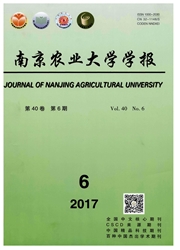

 中文摘要:
中文摘要:
为提高根据车辆动力学响应建立路面不平度时域模型的精度,对RBF神经网络的设计、输入神经网络的动力学响应参数和汽车车体测量点的位置进行了研究。基于拉格朗日第2方程建立了车身任意位置的5自由度振动模型,以滤波白噪声法建立的路面时域激励为车辆激励的输入和神经网络的理想输出,采用改进的人工鱼群算法(AFSA),针对车身测量点距质心的距离、待测量的动力学响应参数的类型和RBF神经网络的扩展系数建立了优化分析模型。提出了2种需测量的车辆动力学响应参数方案,以及各方案下车身测量点的具体位置。研究结果表明,2种方案的路面不平度时域激励估测精度均高于0.99。
 英文摘要:
英文摘要:
In order to improve the accuracy of the time domain model based on vehicle dynamic response, the design of the RBF neural network, the dynamic response parameters of the neural network and the position of the vehicle body measuring points were conducted. Based on the Lagrange second equation, degree 5 of freedom vibra- tion model of vehicle body at any position was established. The road time domain excitation was established for in- put of vehicle excitation and ideal output of neural network by the method of filtering white noise. An improved arti- ficial fish swarm algorithm (AFSA) was used to establish an optimization model for vehicle body measurement point centroid distance, the type of dynamic response parameters to be measured, and expansion coefficient of RBF neural network. Through the research, a strategy with two kinds of vehicle dynamic response parameters was proposed, as well as the specific location of the vehicle body measurement points. The results showed that the accuracy of the two schemes is very high, and the accuracy of the time domain is higher than 0.99.
 同期刊论文项目
同期刊论文项目
 同项目期刊论文
同项目期刊论文
 期刊信息
期刊信息
